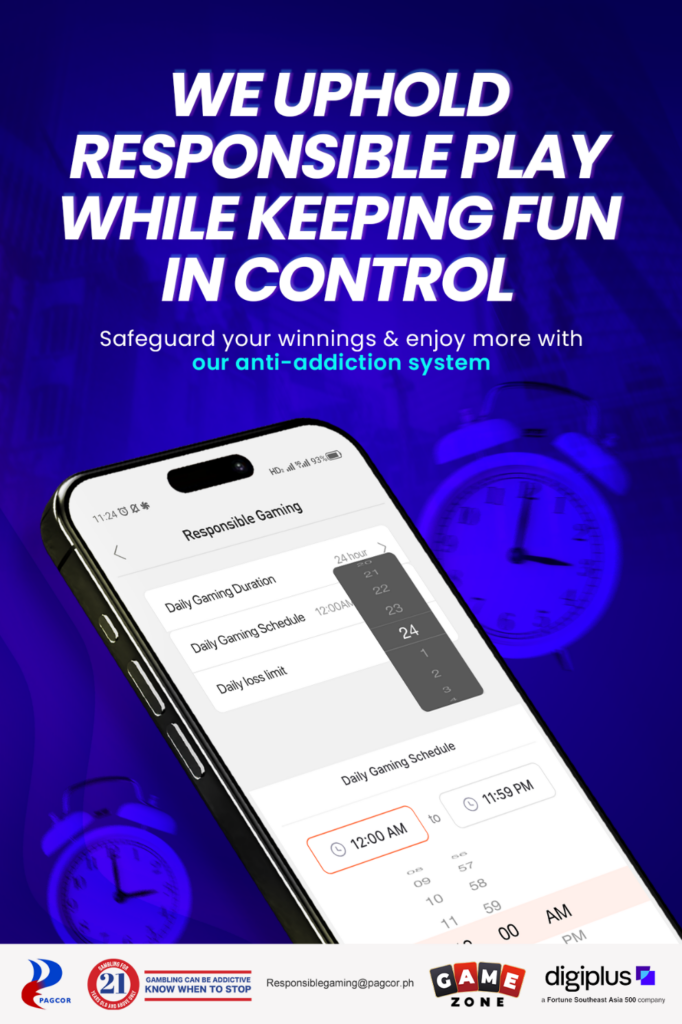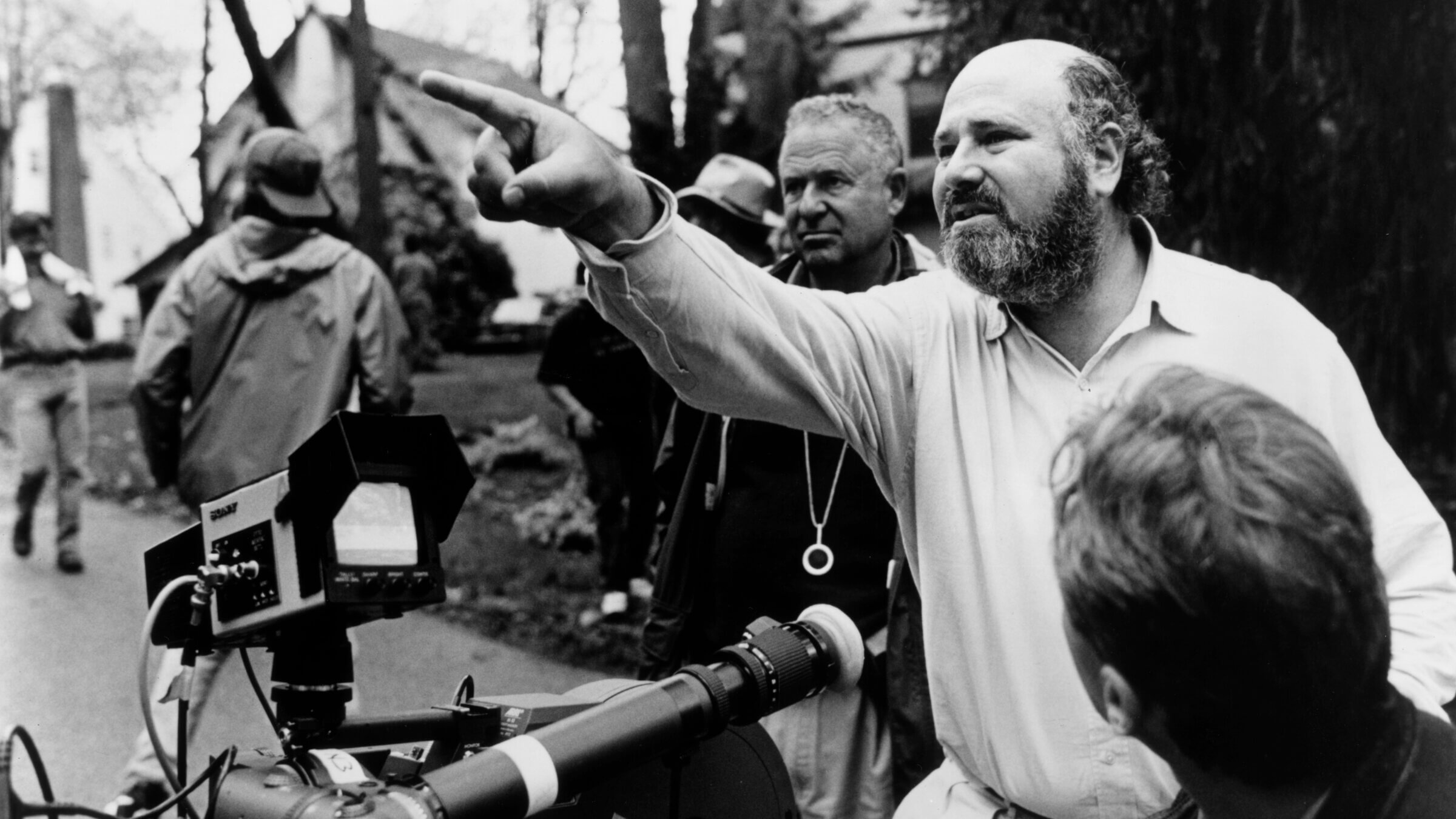Features
Jerusalem Flowers: Discover the Most Popular Blooms for Flower Deliveries

Discover the vibrant flowers of Jerusalem, from anemones to sunflowers. Learn about seasonal bouquets, popular blooms for Jewish holidays, and the cultural significance of flowers in celebrations and traditions.
Explore Jerusalem’s iconic flowers and their role in Jewish holidays. Learn about popular seasonal bouquets and the cultural significance of blooms in this historic city.

Jerusalem, a city steeped in history and culture, is also a location where the beauty of nature thrives amidst contemporary streets and ancient walls. The vibrant blossoms that are present here are not only a visual delight, but they also possess profound cultural and symbolic significance. Recently, flower delivery companies have become well-known in Jerusalem as a practical way for both locals and guests to value and share the floral beauties of the city.
Jerusalem’s Iconic Blooms
The Anemone (Kalanit)
The anemone, locally known as “kalanit,” is one of Jerusalem flowers, most beloved and wanted by everyone. Bursting forth in a spectrum of colours—ranging from deep reds and purples to bright pinks and whites—these flowers are a herald of spring in Israel. This bloom holds a special place in Israeli culture, often associated with the Land of Israel’s natural beauty and resilience. Throughout history, it has been a sign of the country’s rebirth and renewal, and both art and writing have praised it.
Cyclamen (Rakefet)
The cyclamen, or “rakefet” in Hebrew, is another beloved flower in Jerusalem. Known for its heart-shaped leaves and elegantly upturned petals, the cyclamen blooms in various shades, from pale pink to deep magenta. Folklore in Israel says that this flower is a sign of love and honesty. It grows in lots of fields there. They are very strong because they can grow in the rough, rocky hills of Jerusalem. This is a lot like the spirit of the city.
Desert Flowers
Jerusalem is encompassed by dry and barren terrains, which serve as the habitat for distinctive flowers that have adapted to desert conditions. The durability and beauty of these blossoms, such as the desert tulip and the prickly pear cactus flower, are much admired. Not only are they a botanical wonder for living in such a dry place, but they are also a symbol of strength and life in the face of suffering. People like these flowers because they look lovely against the golden hills of Jerusalem. They are often used in cultural images.
Popular Flower Delivery Choices in Jerusalem
Seasonal bouquets are popular in Jerusalem because they reflect the city’s ever-changing landscapes and the cyclical nature of existence. These bouquets highlight the seasonal beauty and cultural significance of local flowers while conveying feelings in a fresh and dynamic manner.
Spring:
- Anemones (Kalanit): Known for their bright colours, anemones symbolize beauty and the ephemeral nature of life.
- Tulips: Often associated with love and rebirth, flowers such as tulips are a popular choice in spring bouquets.
- Cyclamens (Rakefet): Delicate and charming, these flowers are symbols of resilience and grace.
Summer:
- Sunflowers: With their bright yellow petals, sunflowers represent happiness and positivity, making them a popular choice during the warm months.
- Zinnias: These vibrant, long-lasting flowers are symbols of endurance and lasting affection.
- Marigolds: Often used in summer arrangements, marigolds symbolize warmth and creativity.
Autumn:
- Chrysanthemums: Symbolizing joy and a long life, chrysanthemums are a common choice for autumn bouquets.
- Asters: Representing love and patience, asters add a touch of elegance to seasonal arrangements.
- Pomegranates (flowers): While the fruit is more widely known, the flowers of the pomegranate tree are a traditional symbol of abundance and fertility in Jewish culture.
Winter:
- Lilies: Often associated with purity and renewal, blossoming are popular during the winter season, especially around religious holidays.
- Orchids: Symbolizing beauty and strength, orchids add an exotic touch to winter bouquets.
- Narcissus (Daffodils): These fragrant flowers, associated with hope and rebirth, are a popular choice for winter arrangements.
Seasonal flowers in Jerusalem provide a novel and captivating means of expressing emotions, skillfully encapsulating the city’s varied and dynamic essence. These floral arrangements not only showcase the inherent splendour of indigenous flowers but also embody the cultural opulence and customs of the area.
The Role of Flowers in Jerusalem’s Cultural Celebrations
Flowers for Religious Holidays
Flowers play a significant role in Jerusalem’s religious holidays, adding a touch of nature’s beauty to these spiritual occasions.
- Passover: Lilies and irises, which represent rebirth and new beginnings, are frequently utilized as decorations in homes and synagogues.
- Sukkot: the sukkahs, which are temporary shelters commemorating the Israelites’ journey in the desert, commonly incorporate flower decorations during Sukkot, the feast of booths.
- Shavuot: This holiday, also known as the Feast of Weeks, celebrates the giving of the Torah at Mount Sinai. Traditionally used to decorate homes and synagogues, greenery and flowers reflect the harvest and natural beauty of the earth. Common selections are roses and lilies since they capture the vitality and joy of the celebration.
The symbolic meaning of the flowers used in these celebrations goes beyond their mere beauty; they help to create the higher spiritual atmosphere of the celebrations.
Weddings and Celebrations
Jerusalem’s wedding celebrations centre much on flowers because of their symbolic fertility, pleasure, and beauty. From the bride’s bouquet to the reception locations and even the chuppah (wedding canopy), floral arrangements abound in every element of the wedding. White flowers, especially lilies and roses, are stunning because they are pure and reflect a new start. There is something beautiful about every wedding that makes it stand out. This is because flower arrangements generally show national traditions and personal tastes.
Commemorative Uses
In Jerusalem, flowers are a big part of weddings because they represent happiness, beauty, and birth. Any part of the wedding has flowers on it, from the bride’s bouquet to the gathering sites and even the chuppah (wedding canopy). White flowers, such as lilies and roses, are exquisite since they stand for purity and a fresh beginning. Every wedding is different and lovely; hence, the floral arrangements usually reflect national conventions and personal preferences.
Floral Heritage of Jerusalem
Not just beautiful, Jerusalem’s flowers are entwined with the emotional and cultural fabric of the city. From the hardy desert blossoms to the well-known anemones and cyclamens, every bloom recounts human experience and natural beauty. Jerusalem’s flower delivery companies have made sharing this beauty easier than ever, whether through creative arrangements, seasonal bouquets, or classic roses. Accepting these flowers will enable us to include some of Jerusalem’s natural and cultural variety into our daily lives.
Features
So, what’s the deal with the honey scene in ‘Marty Supreme?’

By Olivia Haynie December 29, 2025 This story was originally published in the Forward. Click here to get the Forward’s free email newsletters delivered to your inbox.
There are a lot of jarring scenes in Marty Supreme, Josh Safdie’s movie about a young Jew in the 1950s willing to do anything to secure his spot in table tennis history. There’s the one where Marty (Timothée Chalamet) gets spanked with a ping-pong paddle; there’s the one where a gas station explodes. And the one where Marty, naked in a bathtub, falls through the floor of a cheap motel. But the one that everybody online seems to be talking about is a flashback of an Auschwitz story told by Marty’s friend and fellow ping-ponger Béla Kletzki (Géza Röhrig, best known for his role as a Sonderkommando in Son of Saul).
Kletzki tells the unsympathetic ink tycoon Milton Rockwell (Kevin O’Leary) about how the Nazis, impressed by his table tennis skills, spared his life and recruited him to disarm bombs. One day, while grappling with a bomb in the woods, Kletzki stumbled across a honeycomb. He smeared the honey across his body and returned to the camp, where he let his fellow prisoners lick it off his body. The scene is a sensory nightmare, primarily shot in close-ups of wet tongues licking sticky honey off Kletzki’s hairy body. For some, it was also … funny?
Many have reported that the scene has been triggering a lot of laughter in their theaters. My audience in Wilmington, North Carolina, certainly had a good chuckle — with the exception of my mother, who instantly started sobbing. I sat in stunned silence, unsure at first what to make of the sharp turn the film had suddenly taken. One post on X that got nearly 6,000 likes admonished Safdie for his “insane Holocaust joke.” Many users replied that the scene was in no way meant to be funny, with one even calling it “the most sincere scene in the whole movie.”
For me, the scene shows the sheer desperation of those in the concentration camps, as well as the self-sacrifice that was essential to survival. And yet many have interpreted it as merely shock humor.
Laughter could be understood as an inevitable reaction to discomfort and shock at a scene that feels so out of place in what has, up to that point, been a pretty comedic film. The story is sandwiched between Marty’s humorous attempts to embarrass Rockwell and seduce his wife. Viewers may have mistaken the scene as a joke since the film’s opening credits sequence of sperm swimming through fallopian tubes gives the impression you will be watching a comedy interspersed with some tense ping-pong playing.
The reaction could also be part of what some in the movie theater industry are calling the “laugh epidemic.” In The New York Times, Marie Solis explored the inappropriate laughter in movie theaters that seems to be increasingly common. The rise of meme culture and the dissolution of clear genres (Marty Supreme could be categorized as somewhere between drama and comedy), she writes, have primed audiences to laugh at moments that may not have been meant to be funny.
The audience’s inability to process the honey scene as sincere may also be a sign of a society that has become more disconnected from the traumas of the past. It would not be the first time that people, unable to comprehend the horrors of the Holocaust, have instead derided the tales of abuse as pure fiction. But Kletzki’s story is based on the real experiences of Alojzy Ehrlich, a ping-pong player imprisoned at Auschwitz. The scene is not supposed to be humorous trauma porn — Safdie has called it a “beautiful story” about the “camaraderie” found within the camps. It also serves as an important reminder of all that Marty is fighting for.
The events of the film take place only seven years after the Holocaust, and the macabre honey imagery encapsulates the dehumanization the Jews experienced. Marty is motivated not just by a desire to prove himself as an athlete and rise above what his uncle and mother expect of him, but above what the world expects of him as a Jew. His drive to reclaim Jewish pride is further underscored when he brings back a piece of an Egyptian pyramid to his mother, telling her, “We built this.”
Without understanding this background, the honey scene will come off as out of place and ridiculous. And the lengths Marty is willing to go to to make something of himself cannot be fully appreciated. The film’s description on the review-app Letterboxd says Marty Supreme is about one man who “goes to hell and back in pursuit of greatness.” But behind Marty is the story of a whole people who have gone through hell; they too are trying to find their way back.
Olivia Haynie is an editorial fellow at the Forward.
This story was originally published on the Forward.
Features
Paghahambing ng One-on-One Matches at Multiplayer Challenges sa Pusoy in English

Ang Pusoy, na kilala din bilang Chinese Poker, ay patuloy na sumisikat sa buong mundo, kumukuha ng interes ng mga manlalaro mula sa iba’t ibang bansa. Ang mga online platforms ay nagpapadali sa pag-access nito. Ang online version nito ay lubos na nagpasigla ng interes sa mga baguhan at casual players, na nagdulot ng diskusyon kung alin ang mas madali: ang paglalaro ng Pusoy one-on-one o sa multiplayer settings.
Habang nailipat sa digital platforms ang Pusoy, napakahalaga na maunawaan ang mga format nito upang mapahusay ang karanasan sa laro. Malaking epekto ang bilang ng mga kalaban pagdating sa istilo ng laro, antas ng kahirapan, at ang ganap na gameplay dynamics. Ang mga platforms tulad ng GameZone ay nagbibigay ng angkop na espasyo para sa mga manlalaro na masubukan ang parehong one-on-one at multiplayer Pusoy, na akma para sa iba’t ibang klase ng players depende sa kanilang kasanayan at kagustuhan.
Mga Bentahe ng One-on-One Pusoy
Simpleng Gameplay
Sa one-on-one Pusoy in English, dalawa lang ang naglalaban—isang manlalaro at isang kalaban. Dahil dito, mas madali ang bawat laban. Ang pokus ng mga manlalaro ay nakatuon lamang sa kanilang sariling 13 cards at sa mga galaw ng kalaban, kaya’t nababawasan ang pagiging komplikado.
Para sa mga baguhan, ideal ang one-on-one matches upang:
- Sanayin ang tamang pagsasaayos ng cards.
- Matutunan ang tamang ranggo ng bawat kamay.
- Magsanay na maiwasan ang mag-foul sa laro.
Ang simpleng gameplay ay nagbibigay ng matibay na pundasyon para sa mas kumplikadong karanasan sa multiplayer matches.
Mga Estratehiya mula sa Pagmamasid
Sa one-on-one matches, mas madaling maunawaan ang istilo ng kalaban dahil limitado lamang ang galaw na kailangan sundan. Maaari mong obserbahan ang mga sumusunod na patterns:
- Konserbatibong pagkakaayos o agresibong strategy.
- Madalas na pagkakamali o overconfidence.
- Labis na pagtuon sa isang grupo ng cards.
Dahil dito, nagkakaroon ng pagkakataon ang mga manlalaro na isaayos ang kanilang estratehiya upang mas epektibong maka-responde sa galaw ng kalaban, partikular kung maglalaro sa competitive platforms tulad ng GameZone.
Mas Mababang Pressure
Dahil one-on-one lamang ang laban, mababawasan ang mental at emotional stress. Walang ibang kalaban na makaka-distract, na nagbibigay ng pagkakataon para sa mga baguhan na matuto nang walang matinding parusa sa kanilang mga pagkakamali. Nagiging stepping stone ito patungo sa mas dynamic na multiplayer matches.
Ang Hamon ng Multiplayer Pusoy
Mas Komplikado at Mas Malalim na Gameplay
Sa Multiplayer Pusoy, madaragdagan ang bilang ng kalaban, kaya mas nagiging komplikado ang laro. Kailangan kalkulahin ng bawat manlalaro ang galaw ng maraming tao at ang pagkakaayos nila ng cards.
Ang ilang hamon ng multiplayer ay:
- Pagbabalanse ng lakas ng cards sa tatlong grupo.
- Pag-iwas sa labis na peligro habang nagiging kompetitibo.
- Pagtatagumpayan ang lahat ng kalaban nang sabay-sabay.
Ang ganitong klase ng gameplay ay nangangailangan ng maingat na pagpaplano, prediksyon, at strategic na pasensiya.
Mas Malakas na Mental Pressure
Mas mataas ang psychological demand sa multiplayer, dahil mabilis ang galawan at mas mahirap manatiling kalmado sa gitna ng mas maraming kalaban. Kabilang dito ang:
- Bilisan ang pagdedesisyon kahit under pressure.
- Paano mananatiling focused sa gitna ng mga distractions.
- Pagkakaroon ng emosyonal na kontrol matapos ang sunod-sunod na talo.
Mas exciting ito para sa mga manlalarong gusto ng matinding hamon at pagmamalasakit sa estratehiya.
GameZone: Ang Bagong Tahanan ng Modern Pusoy

Ang GameZone online ay isang kahanga-hangang platform para sa mga naglalaro ng Pusoy in English. Nagbibigay ito ng opsyon para sa parehong one-on-one at multiplayer matches, akma para sa kahit anong antas ng kasanayan.
Mga feature ng GameZone:
- Madaling English interface para sa user-friendly na gameplay.
- Real-player matches imbes na kalaban ay bots.
- Mga tool para sa responsible play, tulad ng time reminder at spending limits.
Pagtatagal ng Pamanang Pusoy
Ang Pusoy card game in English ay nagpalawak ng abot nito sa mas maraming players mula sa iba’t ibang bahagi ng mundo habang pinapanatili ang tradisyunal nitong charm. Sa pamamagitan ng mga modernong platform tulad ng GameZone, mananatiling buhay at progresibo ang Pusoy, nakakabighani pa rin sa lahat ng antas ng manlalaro—mula sa casual enjoyment hanggang sa competitive challenges.
Mula sa maingat na pag-aayos ng mga cards hanggang sa pag-master ng estratehiya, ang Pusoy ay isang laro na nananatiling relevant habang ipinapakita ang masalimuot nitong gameplay dynamics na puno ng kultura at inobasyon.
Features
Rob Reiner asked the big questions. His death leaves us searching for answers.

Can men and women just be friends? Can you be in the revenge business too long? Why don’t you just make 10 louder and have that be the top number on your amp?
All are questions Rob Reiner sought to answer. In the wake of his and his wife’s unexpected deaths, which are being investigated as homicides, it’s hard not to reel with questions of our own: How could someone so beloved come to such a senseless end? How can we account for such a staggering loss to the culture when it came so prematurely? How can we juggle that grief and our horror over the violent murder of Jews at an Australian beach, gathered to celebrate the first night of Hanukkah, and still light candles of our own?
The act of asking may be a way forward, just as Rob Reiner first emerged from sitcom stardom by making inquiries.
In This is Spinal Tap, his first feature, he played the role of Marty DiBergi, the in-universe director of the documentary about the misbegotten 1982 U.S. concert tour of the eponymous metal band. He was, in a sense, culminating the work of his father, Carl Reiner, who launched a classic comedy record as the interviewer of Mel Brooks’ 2,000 Year Old Man. DiBergi as played by Reiner was a reverential interlocutor — one might say a fanboy — but he did take time to query Nigel Tufnell as to why his amp went to 11. And, quoting a bad review, he asked “What day did the Lord create Spinal Tap, and couldn’t he have rested on that day too?”
But Reiner had larger questions to mull over. And in this capacity — not just his iconic scene at Katz’s Deli in When Harry Met Sally or the goblin Yiddishkeit of Miracle Max in The Princess Bride — he was a fundamentally Jewish director.
Stand By Me is a poignant meditation on death through the eyes of childhood — it asks what we remember and how those early experiences shape us. The Princess Bride is a storybook consideration of love — it wonders at the price of seeking or avenging it at all costs. A Few Good Men is a trenchant, cynical-for-Aaron Sorkin, inquest of abuse in the military — how can it happen in an atmosphere of discipline.
In his public life, Reiner was an activist. He asked how he could end cigarette smoking. He asked why gay couples couldn’t marry like straight ones. He asked what Russia may have had on President Trump. This fall, with the FCC’s crackdown on Jimmy Kimmel, he asked if he would soon be censored. He led with the Jewish question of how the world might be repaired.
Guttingly, in perhaps his most personal project, 2015’s Being Charlie, co-written by his son Nick he wondered how a parent can help a child struggling with addiction. (Nick was questioned by the LAPD concerning his parents’ deaths and was placed under arrest.)
Related
None of the questions had pat answers. Taken together, there’s scarcely a part of life that Reiner’s filmography overlooked, including the best way to end it, in 2007’s The Bucket List.
Judging by the longevity of his parents, both of whom lived into their 90s, it’s entirely possible Reiner had much more to ask of the world. That we won’t get to see another film by him, or spot him on the news weighing in on the latest democratic aberration, is hard to swallow.
Yet there is some small comfort in the note Reiner went out on. In October, he unveiled Spinal Tap II: The Beginning of the End, a valedictory moment in a long and celebrated career.
Reiner once again returned to the role of DiBergi. I saw a special prescreening with a live Q&A after the film. It was the day Charlie Kirk was assassinated. I half-expected Reiner to break character and address political violence — his previous film, God & Country, was a documentary on Christian Nationalism.
But Reiner never showed up — only Marty DiBergi, sitting with Nigel Tuffnell (Christopher Guest), David St. Hubbins (Michael McKean) and Derek Smalls (Harry Shearer) at Grauman’s Chinese Theater in Los Angeles. The interview was broadcast to theaters across the country, with viewer-submitted questions like “What, in fact, did the glove from Smell the Glove smell like?” (Minty.) And “Who was the inspiration for ‘Big Bottom?’” (Della Reese.)
Related
- Actor-Director Rob Reiner dies at 78
- Carl Reiner On Judaism, Atheism And The ‘Monster’ In The White House
- Mandy Patinkin On His Favorite ‘Princess Bride’ Quote
DiBergi had one question for the audience: “How did you feel about the film?”
The applause was rapturous, but DiBergi still couldn’t get over Nigel Tuffnell’s Marshall amp, which now stretched beyond 11 and into infinity.
“How can that be?” he asked. “How can you go to infinity? How loud is that?”
There’s no limit, Tuffnell assured him. “Why should there be a limit?”
Reiner, an artist of boundless curiosity and humanity, was limitless. His remit was to reason why. He’ll be impossible to replace, but in asking difficult questions, we can honor him.
The post Rob Reiner asked the big questions. His death leaves us searching for answers. appeared first on The Forward.

